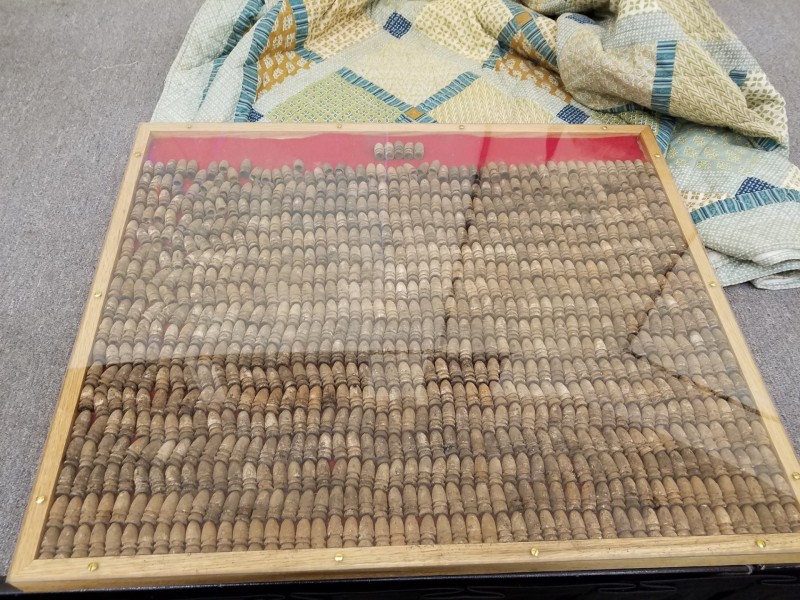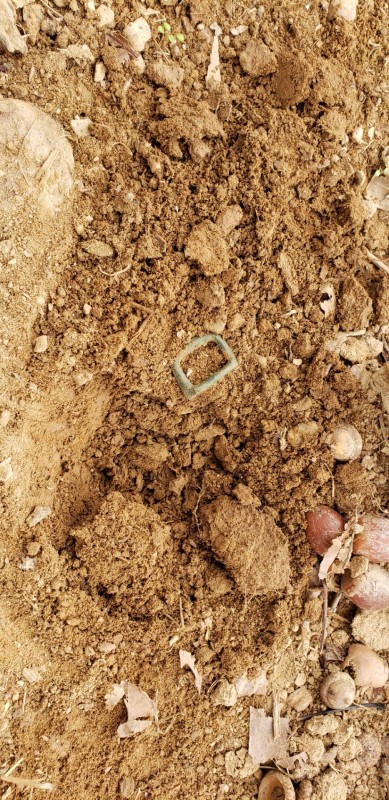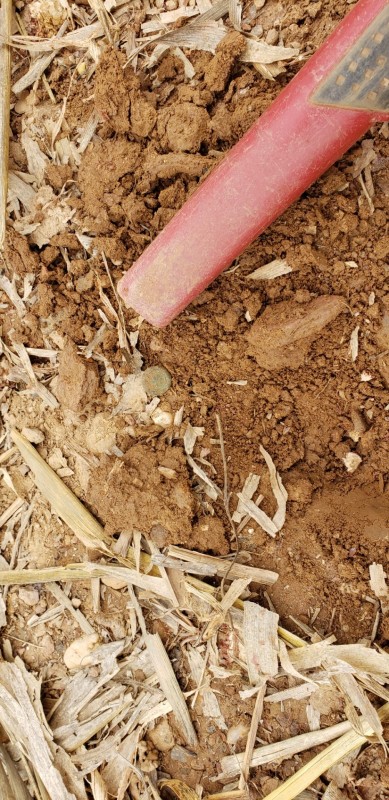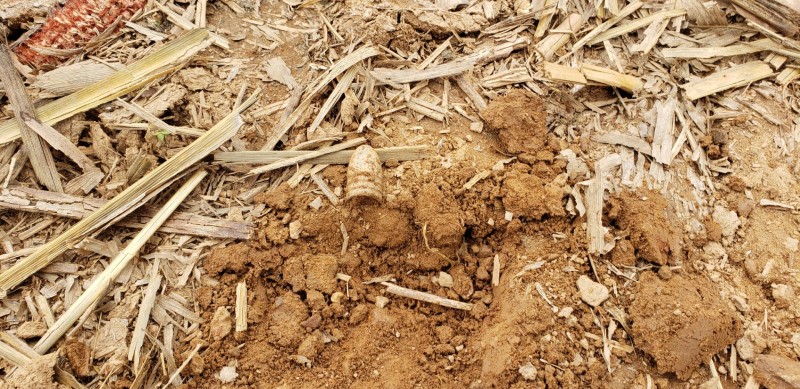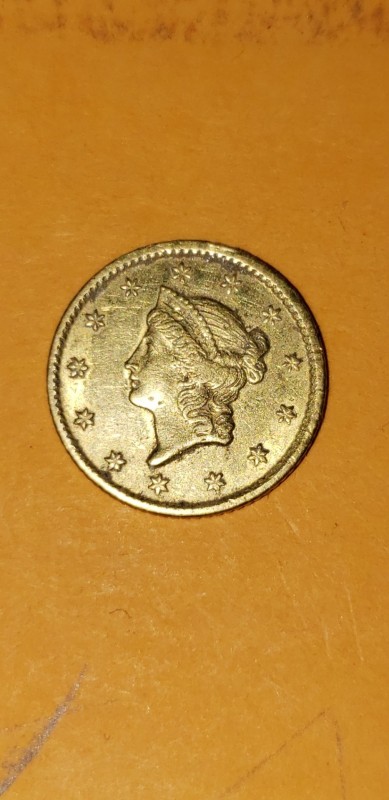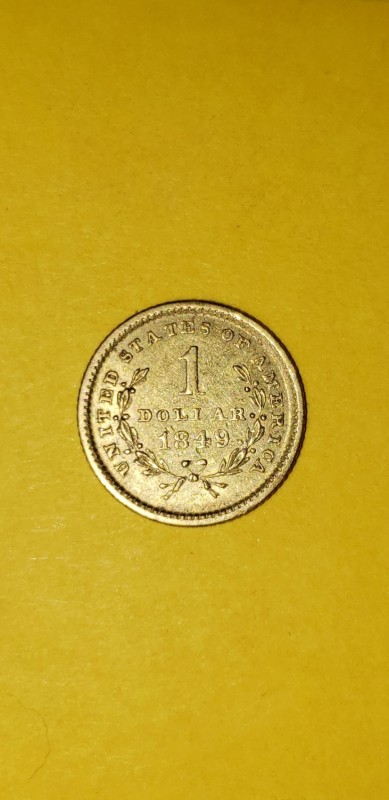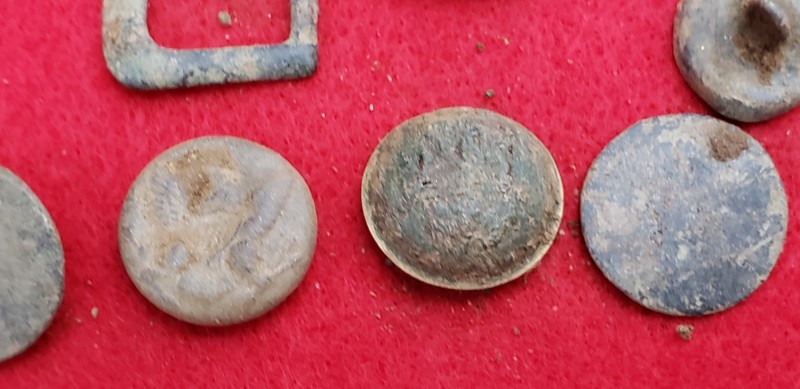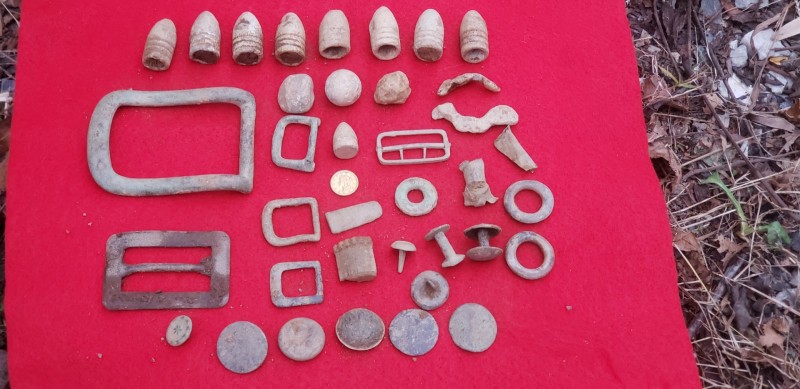-
Posts
6,117 -
Joined
-
Last visited
Content Type
Forums
Detector Prospector Home
Detector Database
Downloads
Everything posted by Chase Goldman
-

Possible USA Nickel Vs. Pulltab Discrimination Technique
Chase Goldman replied to GB_Amateur's topic in Minelab Equinox Forum
I think part of the issue with the FBS die hards is their dependence on the Fe/Co target ID vs. the combination of stripped down but stable target ID with expressive target audio of Equinox. You hear all the complaints about the Equinox having only 50 ID segments, etc. as if one is going to leave a dime in the ground because one is only looking for quarters. A target ID number regardless of whether it is 2, 3, or 4 digits can only tell you so much about the nature of a target. Understanding what the audio nuances are telling you about a target (in conjunction with the TID) is key and that can really only be accomplished with a relatively fast machine such as the Equinox or Deus. There are some key advanced features in the eTrac and CTX including the Fe/Co ID and associated sophisticated discrimination patterns that if married with a Multi IQ-based framework including the key Nox features of multiple Multi IQ profiles, speed, single frequency capability, and other sophisticated filtering such as iron bias, could result in a killer high end machine...but that is the subject of another thread.... -

Possible USA Nickel Vs. Pulltab Discrimination Technique
Chase Goldman replied to GB_Amateur's topic in Minelab Equinox Forum
I've found the ability "hone in" on the signal as Raphis describes is what separates the Nox from it's older FBS cousins that just don't have the recovery speed ability to do this. It takes some practice and in fact I have to "re awake" my muscle memory in doing this technique if some time has elapsed between hunts, but this target interrogation technique has paid off for me in terms of being able to extract deep keepers, especially at junky (both ferrous and non-ferrous junk) sites. -
7 inches for a $1 Gold is impressive. I was happy to recover mine at about 2 inches, but that was also in pretty hot dirt dirt and was a Deus not Equinox. Air test though confirmed a solid 11 with the Equinox that up averages to 12 as depth increases.
-

Minelab GPX 6000 With Geo Sense Pulse Induction
Chase Goldman replied to Steve Herschbach's topic in Minelab Metal Detectors
That’s the point I was trying to make. There is no reason the features for prospecting, relic hunting, or beach hunting with a PI have to be in conflict at all (or implied needs for separate threads). I really don’t care if it can discriminate between gold and lead or between any other non-ferrous metal. Not high on my features list. It would be nice but not necessary, and as long as non-ferrous performance was not affected or that it did not result in significant cost or a delayed release, would not be opposed to the feature. I was merely using the lead vs. gold example as a way to make the tongue in cheek point that the GPX series is indeed used for recovering non-ferrous metallic targets other than gold that have value to those besides prospectors that use the GPX. I really just need it to be a good ferrous discriminator, particularly on small, bent iron that tends to behave like a small mid-conductor even on today’s ferrous blanking GPX, while minimizing blind spot holes for non-ferrous targets, in the process. Improvements in ergonomics (weight, balance, eliminating external batteries and audio amps, and user interface) are most welcome. With the innovative engineering talent ML apparently has at their disposal there really shouldn’t be any reason why ML couldn’t produce a GPX that is as versatile to PI’s as the Equinox is to VLFs. -

Minelab GPX 6000 With Geo Sense Pulse Induction
Chase Goldman replied to Steve Herschbach's topic in Minelab Metal Detectors
Mitchel - I think it's relevant right in this thread. This bullet "horde" was found by a relic hunter using a GPX. The mass of lead plus other large metallic targets in the hole gave a nice, smooth, long low tone. As the relic hunter dug down, obviously, the signal became more intense and ultimate he was rewarded with this find. The reason it was in the same hole is really not a big mystery. This area served several winters as an encampment site for hundreds of thousands of soldiers who really did not have much to do for several months but eat, sleep, play poker and chess, imbibe, try not to get sick and do target shooting with their weapons. The camps were comprised of dug in shelters with fireplace hearths and trash pits/privies nearby. What happened here was that someone left behind a crate of Shaler cartridges in a hut. The huts were were abandoned when whether allowed marching and fighting to resume and were typically demolished and plowed under by the farmers who owned the land where the soldiers were camping. The GPX is ideal, especially in the hot soil of Culpeper, for ferreting out those deep signals that can get you into one of these huts or trash pits and then it is artifact recovery time, with several unbroken bottles, bullets, uniform buttons, coins, bayonets, and other soldier personal and military effects that can be recovered from a single hole or pit. In this case, the crate housing the Shalers apparently disintigrated (as well as the attached paper cartridges that held the powder) and the bullets were able to be recovered as a horde in a single (albeit large) dig hole. A next gen GPX that can differentiate between big iron and other large cache's of metal can be of great use to the CW relic hunter in former winter encampment sites such as the site at which all of these bullets were recovered. Of course the "lead as valuable as gold" was a tongue-in-cheek way to make the point that a relic hunter doesn't need to differentiate/discriminate between gold and lead as much as between gold, lead, brass vs. aluminum (i.e., modern trash). That doesn't mean I am unsympathetic to the plight of prospectors having to deal with "junk metal" (lead, brass, tin, copper, aluminum), when the singular objective is recovery of gold. Just confiming the old adage that one man's trash is another man's treasure. The prospector and the relic hunter are both using the same instrument but with different objectives and perspectives on junk and treasure. HTH. -

Minelab GPX 6000 With Geo Sense Pulse Induction
Chase Goldman replied to Steve Herschbach's topic in Minelab Metal Detectors
This is a display case filled with nearly 1,000 complete Shaler 3-piece CW minie ball bullets found in a single hole dug in Culpeper, VA. At $100+ US dollars per complete three piece set, this display is valued at just north of $100,000. Not really close to the intrinsic weight value of gold, but nothing to sneeze at. Hence my comment from a relic digger's perspective who uses a GPX at these sites. The right kind of lead is valued in my world, as is gold, obviously, and brass not attached to a shotgun shell casing. Aluminum not so much. -
Normally, I would go with Park 1 or Field 1 as they are most heavily weighted to high conductors. No real need to stray far away from the defaults other than removing discrimination as desired and # of tones is a personal preference that doesn't affect performance. F2 iron bias seems to be most effective on ferrous falsing while mitigating the downside of such filtering, namely, non-ferrous target masking. However, if you are really solely focused on high conductors like silver to the extent you are notching out everything else, then Multi IQ frankly doesn't bring that much to the table. In fact you are putting detector transmit power into simultaneous frequencies you are really not using. Therefore, you should really consider giving 4 khz single frequency (SF) a go with some caveats. If power line EMI is not an issue (low operating frequencies tend to be more susceptible to general power line EMI - but noise cancel can still be used to attempt to find a clear shifted 4 khz channel) and iron junk target density is not an issue (Iron Bias is not operational in SF - but you don't seem to be utilizing its advantages anyway), then 4 khz might be a good option. Seems to run with less noise than 5 khz and you will get slightly deeper ground penetration for high conductors like silver. The only other thing you miss out on by going SF is the forgiveness Multi IQ brings to the table with a less than optimal ground balance (which manifests as more ground noise heard when operating with no ferrous discrimination). So having a sat ground balance or using tracking (recommended ONLY if ground phase is constantly changing across the search area) is critical. Ground noise level is also exacerbated by running recovery speed so low (1) with no real payoff in increased depth (as Badger noted) just a higher noise floor. The main goal with Equinox is balancing and optimizing the signal to noise ratio. In a nutshell noise cancel, get a sat GB, run sensitivity no higher than necessary (it is no fluke that ML chose the default setting to be 20 out of a max of 25). Optimize recovery speed to trade optimal swing rate vs. target separation, while not running it so low you generate excessive ground noise. Use iron bias as necessary to minimize ferrous falsing without compromising separation leading to target masking. Good luck!
-

Minelab GPX 6000 With Geo Sense Pulse Induction
Chase Goldman replied to Steve Herschbach's topic in Minelab Metal Detectors
As a relic hunter, lead is gold. Now if they find a way to separate aluminum from gold, lead, and brass, then we might have something to talk about... -
Yup. Thanks Tom, though my wife thought I was OK even before I found it. She was very insightful and pragmatic about it: “So basically that coin is valued at about half the cost of the detector you used to find it right?” I said, “Yeah”, enthusiastically. She said, “So why aren’t you still out there looking for the other one?”
-
Probably a cost they are willing to bear because of the small percentage of users that submerge their units and the smaller percentage of those that will suffer failure. Otherwise, official acknowlegment of a flaw and the resulting blanket product recall would force them to replace units that would never see a drop of water. Again this is all speculation in the absence of any official ML response on the suspected issue.
-

Testing The Garrett Apex / False Signals - Issue Solved
Chase Goldman replied to palzynski's topic in Garrett Metal Detectors
Agree, but the Apex is not the one worth jumping ship for. Hopefully, 2nd gen addresses the shortcomings (tone limitations, recovery), but they appear to be brand fixtures at this point. Rooting for Garrett to prove me wrong, because having multiple coil options is a great thing. -
Yes. Just another false rumor that some of the final production units were not manufactured in Malaysia borne of the fact that ML refuses to explicitly acknowledge the issue and instead quietly replaces them under warranty leaving users to speculate widely as to the root cause. At least ML are standing behind the product warranty. But on the other hand, the silence on a problem that is obviously not just isolated to a few units (especially based on those individuals who have reported multiple failures) gradually erodes brand confidence and trust in my view and makes me wonder how this is going to be handled once the initial warranties start expiring early next year. To the OP - contact the ML repair center for your region and get your unit repaired/replaced. Speculation on what ML refuses to publicly acknowledge is just spinning wheels.
-
Any bluetooth headphones that use the low latency APTX-LL codec should work. Low latency ensures that you hear the target response consistent with the position of the coil over the target. Most non-low-latency Bluetooth phones introduce a signiificant delay such that by the time you hear the target signal your coil has moved inches beyond the actual target position during your swing. Here are a couple phone models on Amazon that are known to work with Equinox and that are considerably cheaper than the ML branded accessory phones. Avantree AS9P Paww Wavesound 3.0 with noise cancelling Aukey Neckband Style Earbuds HTH
-
Sea Hunter II does not have adjustable channels like the Infinium.
-
Hard to say what is going on at this site. It is a mix of Colonial, CW, Victorian, and early 20th century. Spanish and Mexican Republic Reales, Capped Bust Silver, Seated Silver, Largies, IHPs, Trimes, Shield, V, and Buffalo Nickels and Gold coins have all been found here along with both Union and Confederate CW relics (plates, minie balls, buckles, buttons and other brass items). It seems to be a multipurpose site through the years - Colonial home site and picket/lookout area during the Civil War, as well as a couple cache's of relatively modern early 20th century silver coins. The person who has the permission suspects the coins were used for gambling purposes, but like I said, hard to say because the context is missing due to the crop farming. All I know is every time the farmer turns the soil, new stuff pops up.
-

Equinox 800 Not Pairing Ml80 Headphones Strange Solution
Chase Goldman replied to Matelot's topic in Minelab Equinox Forum
Yes, that button needs to be depressed as it turns on the Minelab Wi-Stream radio that transmits to the WM08 first and searches for a WM08, if it finds none after 30 seconds, it turns off the Wi-Stream radio and switches on the Bluetooth radio and searches for BT headphones waiting to pair. If you have a set of BT headphones already paired (or one or more WM08 modules paired), you can shut off the detector without turning off the wireless radio first and the Equinox should automatically connect to the last paired set of headphones or WM08 module(s) if they are powered on without having to go through the pairing process again when you turn on the Equinox the next time out. -
Andy - I really enjoyed talking shop with you at DIV and came away with some really good tips and tricks. Hope to get the Tarsacci out for some more field tests. Was in a groove with the Deus today. When you are swinging with confidence in your detector and your abilities, it almost seems like the ground is transparent. Swinging Tarsacci made me feel like I was swinging in a fog. Need to force myself to put more hours into it. I think the site I was at would be well suited for Tarsacci and am sure I would have hit just about every target I found with Deus, but Deus had the "x" factor today.
-
Did some relic hunting today with the intention of comparing some detectors (Deus, Tarsacci) but the Deus was on fire and besides keeping me from running a detector comparison test it also made it more difficult for me to proclaim 2020 a complete and total dumpster fire, but there is still another month to go.... Anyway, about a hour into the hunt, with the Deus connected to the 11" X35 coil and set at 12 khz with pitch tones and reactivity at about 2.5, I had found some keeper lead and brass. Then I happened upon a strong, 45- 47 signal. Thought it was likely can slaw but I was digging any repeatable non-ferrous signal. My handheld pinpointer indicated it was not deep, and I used my digger to come at it from a safe angle, just in case, and low and behold, out popped my first ever gold coin find - 1849 Open Wreath $1 Gold Piece. It was surreal. My digging partner thought I was kidding, but there it sat glimmering in daylight. Sent a text over to prove it since we were appropriately social distancing (something that comes naturally with this hobby). What a great initiation into the GC club. Needless to say, I kept swinging the Deus for the rest of the day except for a brief half-hearted attempted to see if I could get the Tarsacci going, but save for one so-so brass target, it was a Deus day. I swapped to my 9" round HF coil after the Tarsacci run and finshed up strong with some button, buckle, and bullet finds. One of my best detector single day outings ever in terms of both quantity and quality of relic finds. Only missing silver on this trip, but not complaining. Hopefully, this was a just a preview of what might be in store for 2021, as 2020 has been pretty much a lost year for many of us as far as detecting and other life pursuits go. The Tarsacci/Deus bake off will just have to wait for another day. Stay safe out there and happy hunting. CG
-
Google always knows this and tells you the answer in about 1 second if you forget again. 😉
-
That's the right thing to do, Jeff. It keeps the jack and port clean and prevents noise and false headphone plug detection audio cutouts from happening due to moisture and debris intrusion as described in the user guide inset boxes I cut and pasted. Just didn't want people to think they had to drop the $ on the official adapter to be able to use plugged audio connection in the rain, for example (though it would be preferable to use a compatible screw in plug for the reasons I just described if moisture/mud/dust/dirt are involved). Is the Z lynk weatherproof btw? If not, the whole waterproof question is kind of a moot point for this particular setup question anyway. Apologize for the tangent discussion, but hope it was useful info for some folks as that question regarding water intrusion in the headphone port and jack periodically arises.
- 10 replies
-
- headphones and audio
- minelab equinox
-
(and 1 more)
Tagged with:


